Check out my custom vibration dampener
Babolat RPM Blast
In-Depth Review & Playtest + Video
We hope you love this article. Just so you know, TennisCompanion may collect a small share of sales from the links on this page to help keep this site running. Learn more.
Although there are hundreds of tennis strings on the market, only a select few dominate the field, and Babolat RPM Blast is one of them.
However, when a string achieves mass popularity and adoption, it often begs the question of whether it lives up to the hype or if players are following blindly and basing their decision purely on factors such as Rafael Nadal’s long-standing endorsement.
After all, Babolat released the string over a decade ago. Is it possible that companies, including Babolat, haven’t managed to produce a better product? If you’re asking yourself that question, or at the very least, if you find that question intriguing, you’ve come to the right place.
In this guide, we’ll be diving deep to share everything you need to know about Babolat RPM Blast, including our unfiltered thoughts on whether this string lives up to its name (and high price) and alternatives you may want to consider if you’re on the hunt for a new set of strings.
| String | Type/Color |
| RPM Blast 18 (1.20 mm) | Polyester/Black |
| RPM Blast 17 (1.25 mm) | Polyester/Black |
| RPM Blast 16 (1.30 mm) | Polyester/Black |
| RPM Blast 15L (1.35 mm) | Polyester/Black |
Article Contents
Click below to jump to a section
Tap below to jump to a section
Video Review & Playtest
About Babolat RPM Blast
Type & Construction
Specs & Variations
Stringing & Tension
Review & Playtest Notes
RPM String Family
RPM Blast Alternatives
Summary & Takeaways
New to TennisCompanion?
Create a free account and explore my latest videos below
RPM Blast Video Review & Playtest
As a companion to this guide, we’ve recorded a full video review and playtest that you can watch for a visual walkthrough, allowing you to see the string in action during our playtest.
If you’re not ready or don’t have time to play the entire video, then check out the timestamps below to jump to a specific section.
0:00 – Intro
0:39 – About
1:37 – Specs
2:22 – Stringing & Tension
3:33 – Playtest & Review
3:59 – Power
4:22 – Spin
4:56 – Touch & Feel
5:18 – Control
5:44 – Comfort
6:13 – Playability Duration
6:45 – Durability
7:09 – String Movement
7:31 – How it Sounds
7:50 – Summary
In this guide, we’ll review similar details, but we’ll dive a bit deeper into various areas, so they’re helpful to use in conjunction with each other.
About Babolat RPM Blast
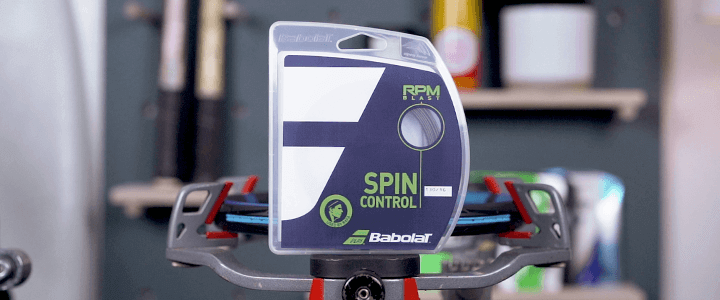
In 2010, a new, somewhat mysterious black polyester string started to show up in a handful of player’s racquets as early as the Australian Open in January. It wasn’t long before Babolat would officially unveil the string as Babolat RPM Blast, which would start to generate some buzz.
However, the string hit its stride in June of that year when commentators including Mary Carillo and Brad Gilbert, along with a few major news outlets, noted that Rafael Nadal, Francesca Schiavone, and Samantha Stosur were using it. These players also happened to be three of the four finalists at that year’s French Open.
Luxilon was one of the definitive leaders in polyester string manufacturing at the time, having introduced Big Banger and ALU Power in the early 1990s, so it was far from the first. However, despite the success of these polys and others coming onto the market, it was clear their harsh feel and low power was a problem for many.
With RPM Blast, Babolat promised improved feel and ball pocketing, enhanced comfort, added power, and even more spin with the string’s grippy octagonal or eight-sided shape.
Although the string wasn’t for everyone, it had struck a chord with the tennis community, and its popularity would only continue to grow. Since its introduction, the string’s formula has remained unchanged. However, Babolat has increased the selection of available gauges and, in 2017, released a slightly modified version dubbed RPM Blast Rough.
Today, it’s one of the most popular strings, helped largely by Rafael Nadal’s endorsement and continued success on tour.
Type of String & Construction

Babolat RPM Blast is a polyester tennis string, or more specifically, a co-poly, which means it contains additives to enhance its performance.
Generally, here are a few of the top characteristics you can expect from a polyester string, which Babolat exemplifies.
Pros
- Added control
- Enhanced spin
- Improved durability
- Low string movement
Cons
- Stiff and lack comfort
- Low power
- Poor tension maintenance
- Reduced playability duration
Keep in mind that various polys will exhibit varying degrees of the above characteristics. For example, some fall on the extreme end of the lower power spectrum, while others offer greater comfort.
However, relative to other types of strings, these characteristics hold true across virtually all polyester tennis strings.
Construction
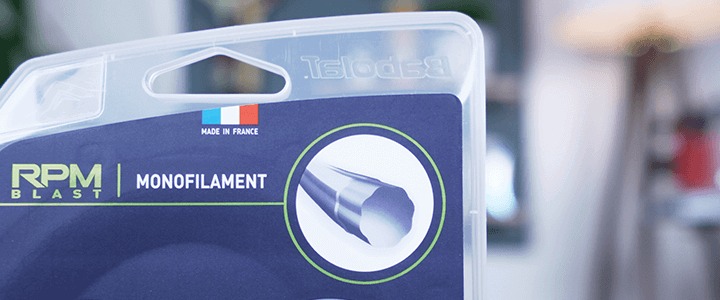
If you’re in the market for a polyester tennis string, you’ll likely hear the terms monofilaments and polys exchanged frequently.
That’s because manufacturers make monofilaments with polyester. Similarly, all polyester tennis strings offer a monofilament construction, which means they feature a single solid strand or filament.
Alternatively, other strings, including natural gut, synthetic gut, and multifilaments, will have multiple filaments or strands when constructed.
Therefore, as you’d expect, Babolat RPM Blast is a polyester monofilament. However, where it stands out is that it’s a shaped octagonal poly with eight sides, which help maximize the strings grip the ball for optimal topspin.
RPM Blast has relatively subtle edges compared to other shaped polys, so some players mistake it as rounded initially. However, upon closer inspection, you should be able to see and feel its sides.
Specs & Variations

A string’s materials, construction, and gauge all affect a string and its expected performance on the court. Let’s review a few different factors that are useful to be aware of when considering RPM Blast.
Single Pack or Reel
Players can purchase Babolat RPM Blast a single pack or reel. Here are the lengths of string available for each:
- Single Pack: 12 meters / 40 feet
- Reel: 200 meters / 660 feet
As you might expect, a single pack will string a single racquet, cut at a sufficient length for virtually any size racquet.
A reel, on the other hand, will be sufficient for a minimum of 16 string jobs. If you’re efficient and stringing a smaller head size, you may be able to eke out a 17th string job, helping save cost in the long run.
Gauge
Babolat RPM Blast is available in four gauges or string thicknesses, including 18, 17, 16, and 15L. The following table outlines how these gauges correspond to measurements in millimeters.
| Gauge | Thickness |
| 18 | 1.20 mm |
| 17 | 1.25 mm |
| 16 | 1.30 mm |
| 15L | 1.35 mm |
The gauge you select depends on performance characteristics that are most important to you. More specifically, a thicker string will increase its durability, while a thinner option will enhance spin and feel. If you’re curious about the difference between each, you’ll want to use those criteria as your basis for comparison.
However, when considering thinner gauges, keep in mind that it’s not going to change your ability to generate topspin dramatically. Rather, it’s nuanced, so if you’ve struggled with breaking strings and enhancing spin is important to you, you’ll likely want to find a middle ground.
For reference, 16 gauge strings are among the most popular and commonly available gauges on the market. Rafael Nadal uses the thickest 15L variation, which shows players can generate plenty of spin even with the thickest version of RPM Blast.
Color
When it comes to colors for RPM Blast, Babolat has kept it simple. The string has only ever been available in black.
If you’re looking for an alternative color, you might consider RPM Blast Rough, which is available in black, red, and yellow.
Weight
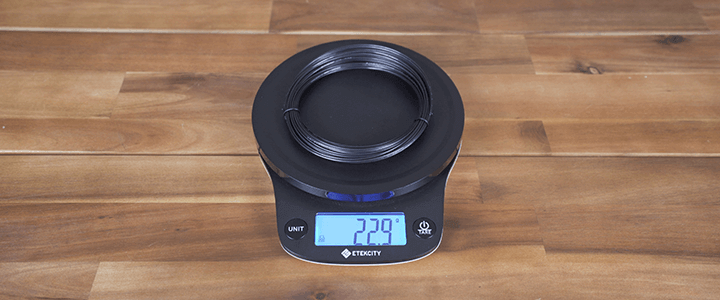
Although the weight of tennis strings isn’t crucial to your racquet’s performance, it’s a useful point of context to recognize that you are adding weight when installing them, which influences its balance.
Of course, the exact weight of your strings will differ based on the type of string, materials, and the amount used for your racquet.
We used 16 gauge Babolat RPM Blast for our playtest, and a 12 m or 40 ft set weighs 22.6 grams (subtracting .3 grams for twist ties) or 0.80 ounces.
Stringing & Tension

Selecting a tennis string is only half the battle. If you determine that Babolat RPM Blast is a worthy contender for your hard-earned cash, then you’ll also need to consider how to string it and identify a tension.
Single String or Hybrid
Babolat RPM Blast performs well when strung by itself as a single string or in combination with another as a hybrid string setup.
Most players use RPM Blast as a single string installed in the mains and crosses. Doing so allows you to fully reap its benefits discussed in an earlier section of this guide. However, you’ll also have to deal with the downsides, such as decreased comfort.
As a result, some players will string RPM Blast as a hybrid with another string that helps offset some of its pitfalls. A popular option would be to string it with a multifilament tennis string or natural gut.
Keep in mind that the string you choose to install for the mains will dominate the overall feel and that it’s most common for players to install the poly in the crosses when stringing a hybrid. With that said, it’s perfectly acceptable to string the poly in the mains if you prefer.
Tension
There are no rules for selecting a tension for Babolat RPM Blast, but there are some useful points worth considering.
First, your racquet has a recommended tension range, which helps provide a rough guide for optimal performance. Manufacturers often print this range on the frame. If not, a quick search online will help you find it.
Furthermore, some strings offer a recommended tension range as well. For RPM Blast, Babolat recommends 48 – 66 lbs or 22 – 30 kg.
If you’re stringing your racquet for the first time, we’d recommend you start by stringing your racquet at the middle of your racquet’s recommended tension range to give yourself a baseline, then adjusting from there when you restring in the future.
Roughly speaking, higher tensions will result in greater control, while lower tension will increase power.
Ease of Stringing
If you string your racquets, you might be curious how well RPM Blast handles and whether it’s easy to string.
Polyester strings are stiff, so right out of the package, they’ll have quite a bit of memory coil that can make them challenging to handle relative to other types of strings, and RPM Blast fits into this category. However, it’s by no means more wiry or hard to manage than other polys.
To reduce the difficulty of handling RPM Blast, you might consider stringing with two pieces as I always do unless otherwise recommended by the racquet manufacturer.
Regarding string installation, I find it pretty easy to work with as it weaves effortlessly, and its slick surface helps it pull through with minimal friction.
Babolat RPM Blast Review & Playtest Notes
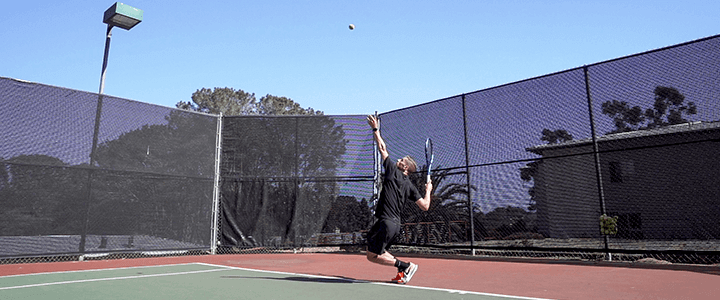
When you’re searching for a new set of strings, it pays to do your research and get a sense of what to expect, and unfortunately, you can’t rely entirely on the marketing a company provides. After all, they’re in the business of selling you their products.
With that in mind, I’ve thoroughly tested Babolat RPM Blast on the court to share my thoughts and experience with you.
| Strings | Babolat RPM Blast (1.30 mm) |
| Racquet | Babolat Pure Drive 2021 |
| Tension | 52 lbs / 23.58 kg |
| Forehand Grip | Semi-Western |
| Backhand | Two-handed |
| Grip Size | #3 – 4 3/8 |
| Grip | Babolat Syntec Pro |
| Overgrip | Babolat Pro Tour |
| Weight | 165 lbs / 74.84 kg |
| Height | 6’0″ / 1.83m |
Although any review by its nature is somewhat subjective, I’ve done my best to remove opinions and rate RPM Blast on the following criteria, which I use for all of my string reviews.
To learn more about why I gave the string a specific score, check out my playtest notes in the following sections.
For reference, I’m taking into consideration the fact that I’m playing with the Babolat Pure Drive 2021, which is a higher-powered frame.
I’ve hit RPM Blast with a wide range of racquets, including the Babolat Pure Aero 2019, Wilson Pro Staff 97, and Yonex EZONE 98, to name a few, so I’ve brought that context to the table when sharing my notes below.
Power

As you’d expect from a poly, Babolat RPM Blast falls on the lower end of the power spectrum. However, relative to other polys, I find it’s reasonably lively and therefore falls somewhere in the middle of the pack.
On groundstrokes, I felt confident swinging out without overhitting, and on serves, I didn’t feel like I’m giving up too much, which I find is often a drawback when stringing a full bed of poly.
Spin

Without a doubt, RPM Blast excels when it comes to topspin. However, I wouldn’t say it entirely lives up to the hype, which Nadal heavily influences through his use and endorsement of this string.
In other words, I find many players see what Rafa achieves with RPM Blast and give the string far too much credit.
Despite that, spin is one of RPM Blast’s strengths, and I think it’s fair to say it’s one of the best in this regard. However, I’d encourage players to temper their expectations and keep in mind that spin is primarily a function of a player’s technique and racquet head speed.
Touch & Feel

Not to be confused with comfort, the area of performance that I think will surprise most first-time users of RPM Blast is touch or feel, which I find to be above average for a poly.
The string offers excellent feel and ball pocketing from the baseline, which helps instill greater confidence when striking the ball. However, it doesn’t disappoint up at the net, where many other polys often fall short.
Control

When it comes to control, a variety of factors have to align, and for the most part, RPM Blast hits all the right marks.
It’s low-powered and delivers exceptional spin along with respectable feel, all of which combine to provide excellent control.
Although it’s possible to overhit with any string, I find I’m able to swing bigger without the ball sailing long, which further translates to added confidence and a sense of control.
Comfort

As far as comfort goes, don’t expect too much from RPM Blast. It’s a stiff poly that falls on the lower end of the comfort spectrum, so if you’ve had a history of arm injuries or discomfort, I’d steer clear.
With that said, I’ve never had any issues with RPM Blast, and I don’t find it to be overly jarring. As a result, I’d encourage players to recognize the pitfall and monitor their comfort. However, I don’t think it should be a significant deterrent for its use relative to other polys.
Playability Duration

One of the biggest pitfalls with polyester tennis strings is how quickly performance can drop off, often resulting in frequent restringing.
Therefore, as you might expect, RPM Blast posts sub-par performance in this area. I find I can usually get a solid 8-12 hours of hitting over two to three weeks before I begin to notice a more substantial decline.
Although reasonably acceptable for this category of strings, RPM Blast is pricey, which, combined with more frequent stringing, presents what I find to be one of the string’s biggest pitfalls.
Helpful Tip
Due to the string’s respectable durability, many players will be able to go quite a bit longer without restringing their racquet. How often you restring is a personal preference, so you may find you’re satisfied with your string’s performance at week three or four and beyond. With that said, a dead poly can wreak havoc on a player’s arm, so I’d encourage players to restring RPM Blast more frequently.
Durability

Regarding durability, RPM Blast is solid, and I find it tends to survive until restringing instead of breaking along the way.
Of course, you’ll have to keep in mind that it’s often not getting the point of breaking for me because I’m cutting it out every two to three weeks.
I’ve always tended to break strings, and on occasion, RPM Blast will fail before restringing, but more often than not, it lasts.
Helpful Tip
If you find you are breaking RPM Blast, you do have the option to bump up to their thicker 15L gauge, which will better withstand breakage.
String Movement
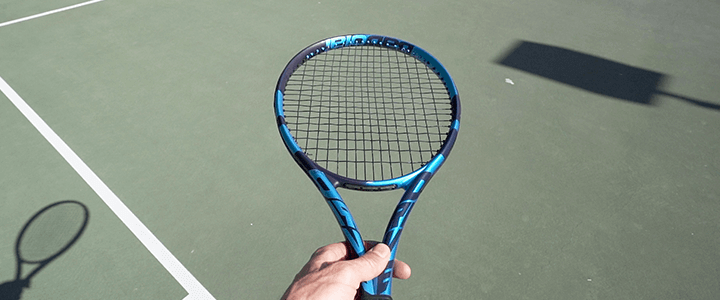
Although it’s one of the least valuable criteria when selecting a tennis string, I’ve always appreciated having a baseline for string movement.
RPM Blast is a resilient poly and will snap back into place after contacting the ball. As a result, there is relatively limited string movement and a subsequent need to adjust your strings constantly.
I find the center mains will need a minor touch-up from time to time, but they tend to stay put for the most part. For reference, the above photo shows what the strings look like untouched after four hours of play.
Summary
In many ways, I find people oversell the performance and benefits of RPM Blast, which Rafa’s endorsement magnifies. In other words, I feel like it’s almost impossible for the string to live up to expectations fully.
With that said, I do consider it to be one of the best polyester strings on the market, and it’s undoubtedly one of the most prevalent.
Overall, it delivers exceptionally well on performance areas you hope to see in a poly, and its feel is what I believe separates it from many others.
However, if you suffer from arm discomfort, you’re a beginner, or you’re price-sensitive or want to avoid frequent restringing, then I’d encourage you to seek out alternative tennis strings.
| String | Type/Color |
| RPM Blast 18 (1.20 mm) | Polyester/Black |
| RPM Blast 17 (1.25 mm) | Polyester/Black |
| RPM Blast 16 (1.30 mm) | Polyester/Black |
| RPM Blast 15L (1.35 mm) | Polyester/Black |
RPM String Family
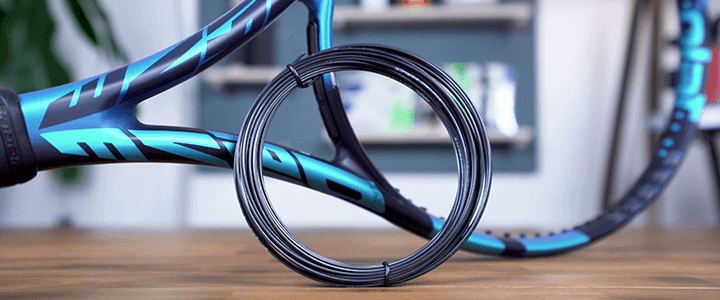
Babolat offers five different polyester strings within the RPM family. They all have similar overarching performance characteristics, but each seeks to enhance specific qualities to cater to various players.
Babolat RPM Blast
Babolat’s flagship polyester, RPM Blast, has stood the test of time and remains the most popular in the lineup.
Now that you know what to expect from RPM Blast as part of my review and playtest, I’ll use it to compare the rest of the strings in this family.
Babolat RPM Blast Rough
Babolat’s unique co-poly formula for RPM Blast makes topspin one of its defining characteristics aided by its octagonal or eight-sided shape.
However, with RPM Blast Rough, Babolat attempts to take things up a notch by adding a rough or textured outer layer to further grip the ball for enhancing spin even further.
With regards to spin, they’re both excellent. However, I prefer the performance of the original in this department.
With that said, I do find RPM Blast Rough to play a bit more power and offer a subtle improvement in comfort but not quite as good durability.
Babolat RPM Power
RPM Power is the only unshaped polyester tennis string in Babolat’s RPM lineup. As you might expect, RPM Power seeks to deliver a livelier hitting experience than the original. In this case, I do think Babolat finds a formula that enhances performance in this area.
However, like RPM Blast Rough, I find RPM Power to play softer than the original RPM Blast, which translates to added comfort, but it’s not quite as durable, and its performance trails off quicker. As a result, expect it to require more frequent restringing.
Babolat RPM Hurricane
Previously called Pro Hurricane Tour, RPM Hurricane is the most durable member of the RPM family. If you’re a chronic string breaker or find you go through strings faster than you’d like, then it’s worth a try.
RPM Hurricane is extra firm and lower-powered than the original RPM Blast, which for many will translate to less comfort and more control.
Like RPM Blast, it’s a shaped poly and provides plenty of access to topspin, so it’s simply a matter of your priorities.
Babolat RPM Team
Featuring the same octagonal or eight-sided shape as the original RPM Blast, Babolat set out to create a softer poly with a special low-density co-poly formula.
Interestingly enough, lab testing has shown that it’s stiffer than the original, and in my experience, I don’t find it to offer a noticeable difference in comfort. Despite that, it delivers plenty of spin, control, and durability, but I prefer the original.
I’d love to see Babolat reformulate this string, update the naming to RPM Soft, and strive a bit further for added comfort to round out their lineup.
RPM Blast Alternatives
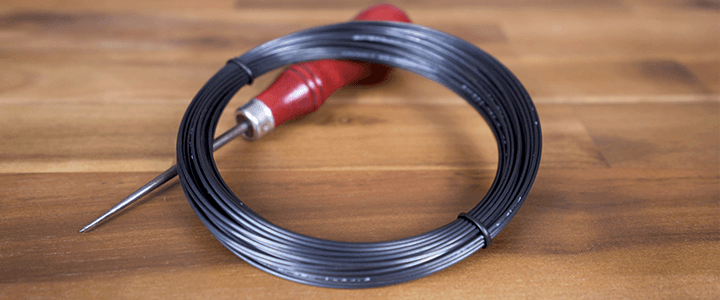
Although Babolat RPM Blast is my pick for one of the best tennis strings on the market, it’s far from the only option in the game, and there are plenty of others worth exploring.
If you’re looking for a few additional high-quality alternatives, here are a few that I’d recommend checking out.
Solinco Hyper-G
Solinco Hyper-G is hard to miss on the court with its bright green color and one of the best alternatives to RPM Blast if topspin is a priority.
However, beyond spin, Hyper-G stands out from the crowd offering an exceptional feel and a bit more comfort than RPM Blast. Beyond its performance, I love its reasonable price point.
Luxilon ALU Power
Long before Babolat’s RPM Blast hit the market, Luxilon ALU Power was turning heads and reshaping the modern game of tennis.
Comparing the two, I find Luxlion ALU Power to play a bit stiffer and with slightly less power, but it’s another time-tested option to check out.
Solinco Confidential
A relative newcomer to the scene, Solinco released Confidential in 2020, and it has been a hit and one of my favorite releases in recent years.
Nearly across the board, Solinco Confidential offers a similar performance to RPM Blast. However, one area where I find it excels above and beyond RPM Blast is playability duration or how long its performance holds up.
With that said, I do find RPM Blast to deliver more spin and a tad more comfort, so that’s worth keep in mind.
Volkl Cyclone
Another string that’s well worth checking out as an alternative to RPM Blast is Volkl Cyclone.
Once again, there are many similarities between the two, but I find RPM Blast to offer more spin and a touch more control, while Volkl Cyclone has a bit more power. Hands down, Cyclone provides the best performance in a poly for the money.
Summary & Takeaways

Babolat’s RPM Blast has been a crowd favorite for years, and I expect it will remain that way for many more to come.
Yes, it has one of the best endorsements money can buy with Rafael Nadal, but its performance stands on its own two feet. If spin, control, and durability are a high priority, then it’s a polyester string well-worth testing to see if it meets your needs.
On the other hand, if you struggle with arm discomfort, you’ll likely want to steer clear and opt for something with more comfort. At the very least, I’d encourage you to string it as a hybrid in the crosses.
If you’re new to tennis, then I’d encourage you to avoid Babolat RPM Blast as well. Topspin is primarily a function of a player’s technique and racquet head speed, so I’d encourage you to spend time working on the fundamentals first. Once you’ve developed an intermediate level of performance, you’ll be in a position to reap its benefits fully.
So there you have it! I hope you enjoyed this review of RPM Blast. Of course, if you have any questions, feel free to comment below. I’d love to hear from you.
Play Better Tennis
Improve your game alongside our community of tennis players
Why join?
Discussion Boards
Join the conversation with other members of the community.
5 Point Friday
Read our weekly recap of the 5 most interesting things we dig up in tennis.

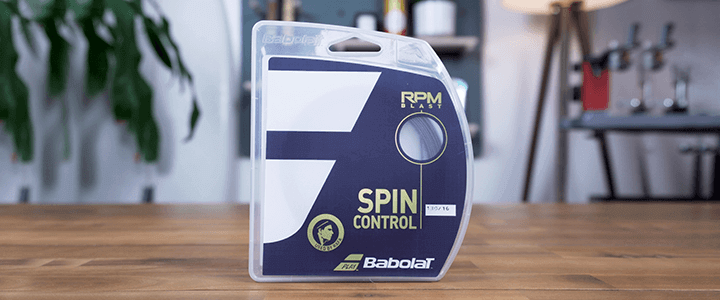

Leave a Reply
Want to join the discussion?Feel free to contribute!